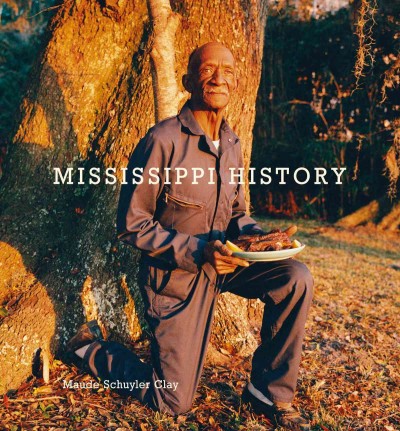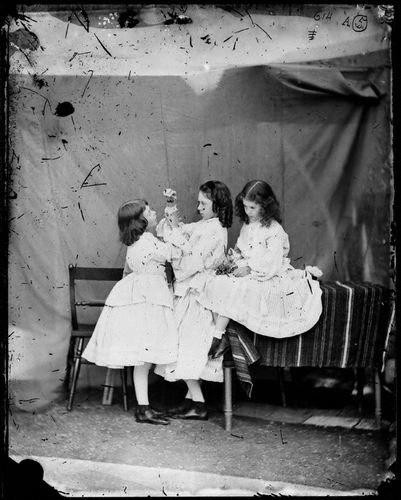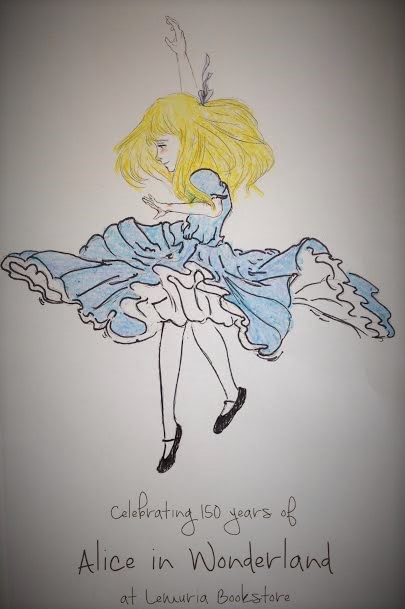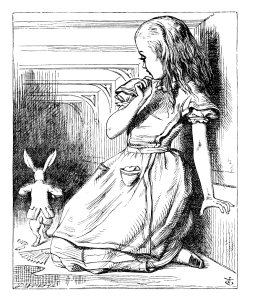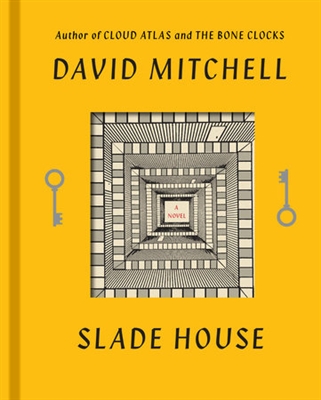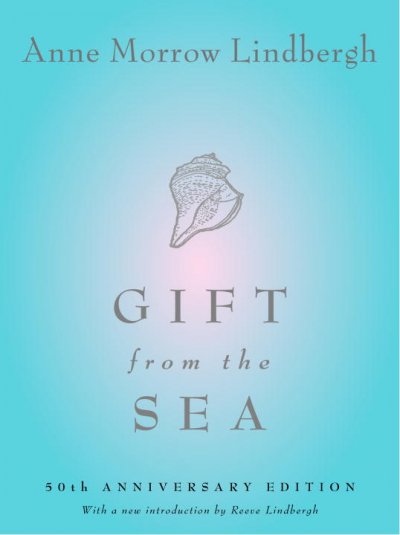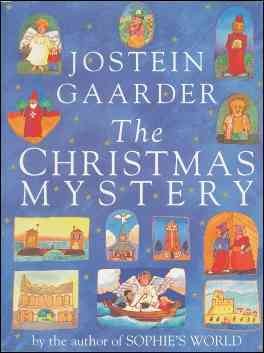
Zachary Thomas Dodson’s premiere release of Bats of the Republic curled my mustache. It ruffled my petticoat. It rattled my saber.
At first, it seems like Dodson is roaming around his laboratory grabbing a piece here and a piece there, then tossing them into a hissing concoction of steam, true love, fear and laudanum. Borne by Dodson’s miraculous engineering, Bats of the Republic comes to life like a steam golem. Step by step, spare parts assemble into colorful, eccentric prose. What Dodson has done in Bats of the Republic is not madness; Bats is science, and Dodson is the scientist (albeit a mad one).
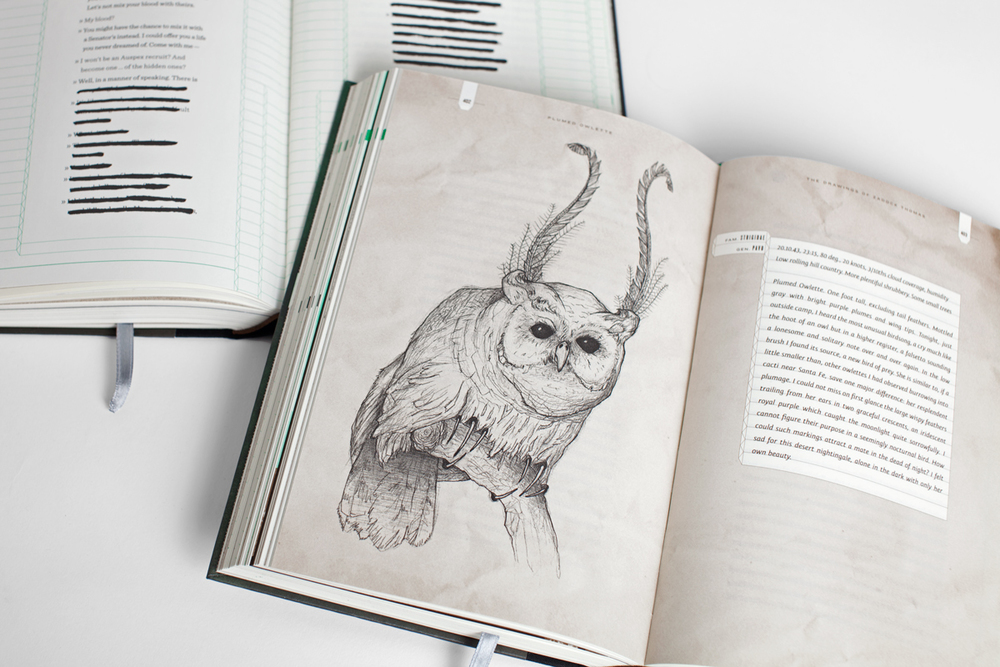
As a bookseller, this book doesn’t even need me. All I have to do is put it in a customer’s hand and tell them to flip through the pages. In this way, the book sells itself. Bats generates immediate intrigue. On first contact, you’ll be left wondering things like, why do these pages look like they’re from an antique book? Or, why the hell is there an intricate drawing of a rabbit with deer antlers? Or, what’s up with this sealed envelope at the end that has ‘do not open’ scrawled on the back in blood?
So, the first thing you’ll notice about Bats is that the book is visually beautiful. The illustrations and formatting, all designed by Dodson, add incredible depth to the work. Subtle differences in page/type formatting punctuate revolving plot lines. This is a well-apprehended device, because as the novel gains velocity, plots (separated by vast differences in time and space) begin to dance around each other in succinct, eloquent proximity.
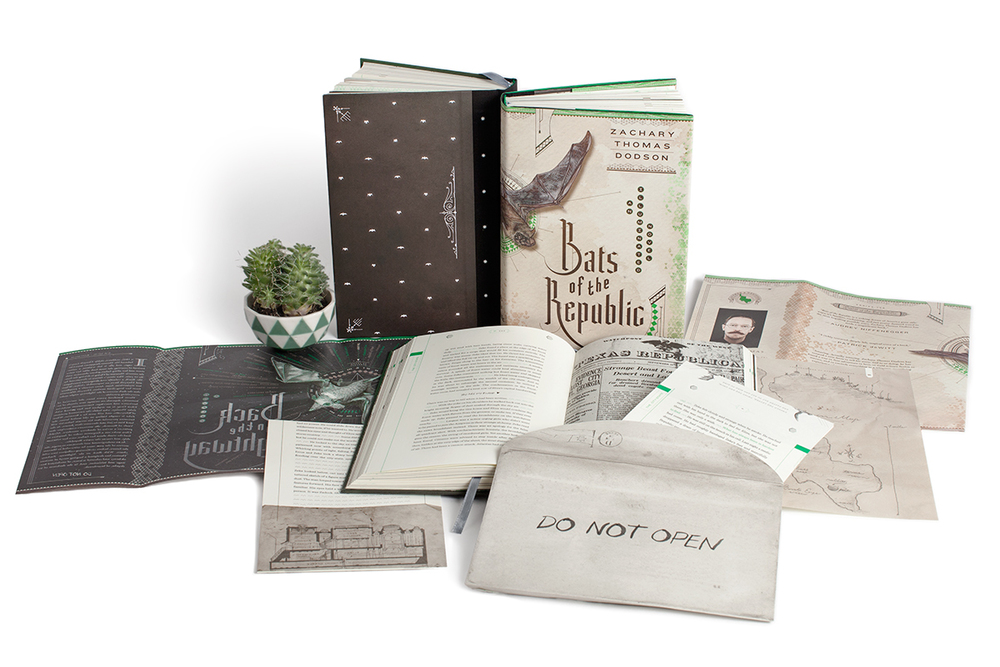
If you’ve ever read House of Leaves by Mark Z. Danielewski, then you understand the potential of a mixed-media novel. Although Dodson and Danielewski may share conceptual elements, the two artists seek to provoke vastly different outcomes. Whereas Danielewski’s work often becomes chilling, Dodson has a sly sense of humor that permeates the entire work. The comic element of Bats is a blend of quizzical curiosity and hopeless irony. At times, Bats will leave you feeling bat-shit-crazy; feeling as if you were lost in a desert, chasing a mirage of a water park.
In the way of plot, Dodson has created something that has never before been approached. It is steampunk futurism interacting with the accurate history of America in her early 19th century adolescence. Bats is the romance of Jane Austen combined with spicy blood magic, witchcraft, and mystical astronomy.
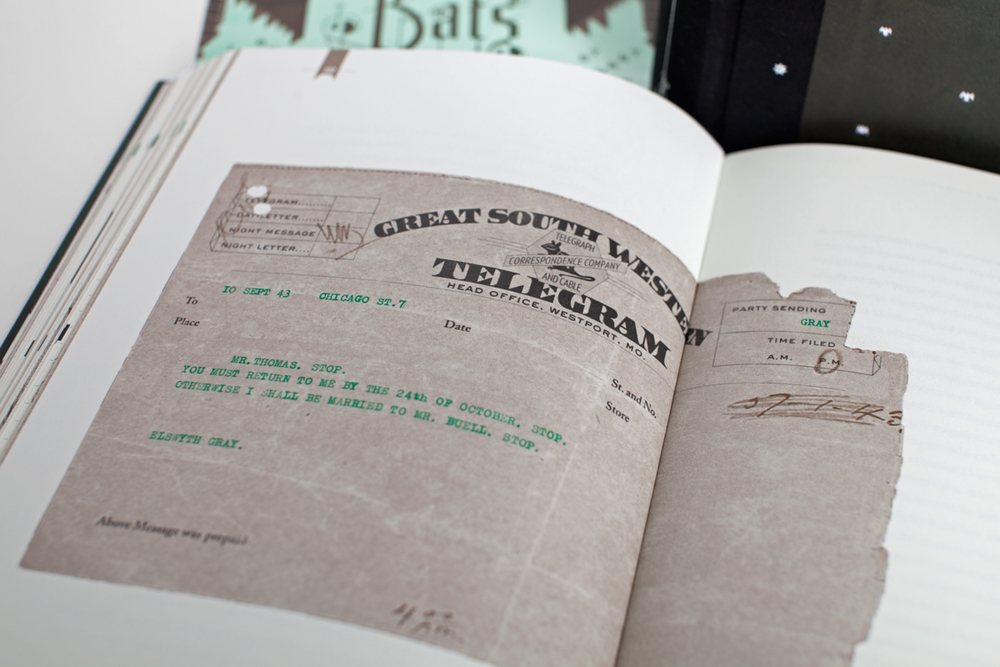
But most of all, the novel is a guileful social commentary. The society that the protagonist lives in (Texas in the distant future) is a dystopia that would make Aldous Huxley and Ray Bradbury facepalm. Not only are citizens in these communities not allowed to read, they’re prohibited from writing ANYTHING on paper. Everything is recorded and monitored by clandestine thought police wielding steam-sabers.
With Bats of the Republic Dodson has firmly established his ingenuity, and I eagerly await any new work from him. Bats is easily the most creative novel I’ve read this year. Come to Lemuria and let me show you this book; because, if your taste are in anyway similar to mine, one of the rebellious, mustachioed heros of this novel will carry you far beyond the prohibitive walls normative society. Dodson blazes like a lantern in the deepest, darkest caverns of the imagination with this work that will be long remembered.

All images from www.zachdodson.com
 Because it’s the week before Christmas, and Christmas is a crazy time around Lemuria, I’m going to keep this blog short and sweet; just like Gillian Flynn’s new 62 page book, The Grownup. (Okay, maybe there’s not a lot of “sweet” to this book, but you get where I’m going with this). Plus, if you’re as busy as we are at the moment and you know you don’t have a ton of time for reading, you can knock this book out in an hour.
Because it’s the week before Christmas, and Christmas is a crazy time around Lemuria, I’m going to keep this blog short and sweet; just like Gillian Flynn’s new 62 page book, The Grownup. (Okay, maybe there’s not a lot of “sweet” to this book, but you get where I’m going with this). Plus, if you’re as busy as we are at the moment and you know you don’t have a ton of time for reading, you can knock this book out in an hour.

